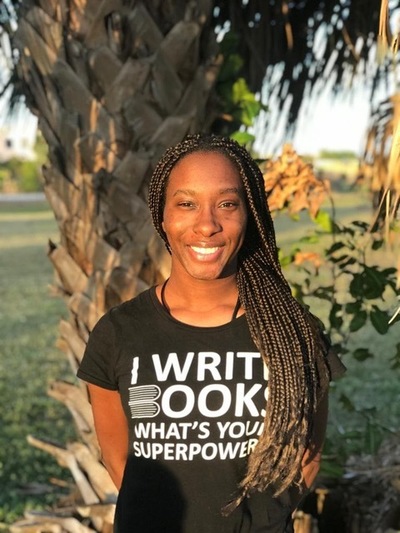The Book Woman of Troublesome Creek was inspired by the true, historical blue-skinned people of Kentucky and the brave and dedicated Kentucky Pack Horse Library Service, which spanned the 1930s and early ’40s during eastern Kentucky’s most violent era.
Years ago, I stumbled across these heroic librarians of the Great Depression and the rare blue-skinned Kentuckians, and I couldn’t stop thinking about them. I wanted to embrace their strengths and uniqueness in story. There was such rich, magnificent history in the two, and I was surprised that I hadn’t seen them in novels—that neither had been given a large footprint in literary history. I knew it was time for the wider world to experience them fully, to learn about and see the glorious Kentucky female packhorse librarians and the precious blue-skinned mountain folk.
There was a small, isolated clan that suffered from a rare genetic condition called congenital methemoglobinemia. To learn more, I visited with doctors and spoke with a hematologist. I was saddened to find how the Blues were treated—how people shunned and shamed them instead of embracing them for their very uniqueness. It became important for me to humanize these Appalachian folk, to shed light and dispel old stereotypes, to help inform others by bringing these unique people into a novel. I have much empathy for marginalized people, for anyone who has faced or faces prejudices and hardships. It’s easy to feel the Blues’ pain deeply, particularly if you’ve gone through hardships in your own life.
Librarians have always been dear to me. I grew up under the grinding heels of poverty, spending my first decade in a rural Kentucky orphanage, and then on to foster care and beyond, to finding myself homeless at age 14. As a foster child in 1970, I remember going to my first library one lonely summer and checking out a book with the help of a librarian who wisely informed me that I could take home more than one. I was moved by her compassion and wisdom and have not forgotten her to this day. Librarians are lifelines for so many, giving us powerful resources to help us become empowered.
Long ago, I began collecting everything I could on the packhorse librarians and blue-skinned people, poring over archives, old newspapers, pictures, documentaries and more. My research stretched into coal-mining towns and their history, and then into thick-treed forests to explore fire-tower lookouts and interview an old mountaineer who was a former fire-tower watcher. The mountain man had many intriguing stories about living in a fire tower and generously shared them over a modest Christmas meal. Other research included more hours studying Roosevelt’s New Deal and WPA programs. And last, there was the fun and interesting research on mules. I had every intention of riding one until I fell off the mountain.
Sadly, there isn’t a cool or exciting wolf or bear-that-chased-me story to be had here. Instead, this story involves me awkwardly toting a tall stack of heavy Pyrex casserole dishes down dangerous concrete steps for an elderly mountain lady. After an embarrassingly painful fall, my arm suffered seven breaks, but the Pyrex survived with nary a scratch.
In 2016, I had the honor of meeting the talented Georgia playwright and writer Amina S. McIntyre, who was staying nearby at a Kentucky nature conservancy for an artist-in-residency program that I’d supported. Since Amina was new to the area and alone on the 300-acre preserve, I wanted to welcome her and drop off books and pie. Important and conducive to good writing and creating, so I thought! Amina kindly showed me around the pastoral grounds and inside the old antebellum farmhouse that she occupied. She paused to point out an antique courting candle, which ended up becoming an important theme in my novel and inspired the first pages of The Book Woman of Troublesome Creek.
The legend behind the candle says it was used by patriarchs to set a time limit for the suitor who came courting his daughter. I was utterly captivated by the concept—although the unique spiral design of the 100-year-old wrought iron courting candle was likely created as a mere practicality to keep the melting candle in place and from slipping. More folklore than fact. Still, I found the candle a commanding and curious induction of courtship. And I couldn’t stop imagining how the candle could have been the source of someone’s lifelong misery or joy and how it had been passed on to different generations. How wonderful the conversations must have been that took place around and over it.
That visit with Amina led me to look for a courting candle. Eventually I found one: a small curiosity to be admired, more decor than practical. But when my novel went on submission to publishers and I was given the wonderful opportunity to talk to several editors, that changed. As I picked up the phone to chat, I immediately lit the old courter, hoping for the perfect “intended” for my novel. It worked.
Additionally, I spent thousands of hours exploring everything from fauna to flora to folklore to food and longtime traditions indigenous to Appalachia. I was fortunate to have a shoebox apartment atop a mountain in Appalachia and to be able to live in that landscape and spend time with native Appalachians who taught me the lyrics and language of their people and ancestors.
Kentucky has always inspired and influenced my books, as it is both a beautiful and brutal place full of fascinating history, varied landscapes, complex people and culture, and I’m fortunate to live in a region that my heart can draw on.
ALSO IN BOOKPAGE: Read our review of The Book Woman of Troublesome Creek.















